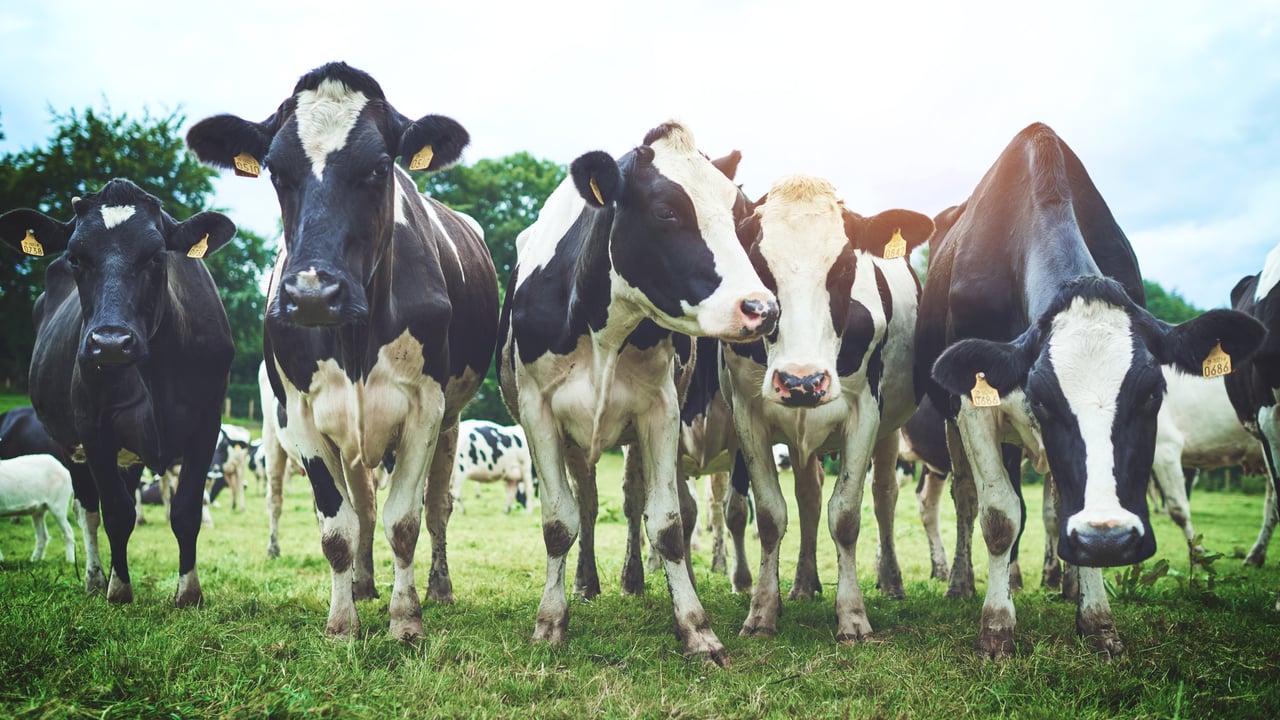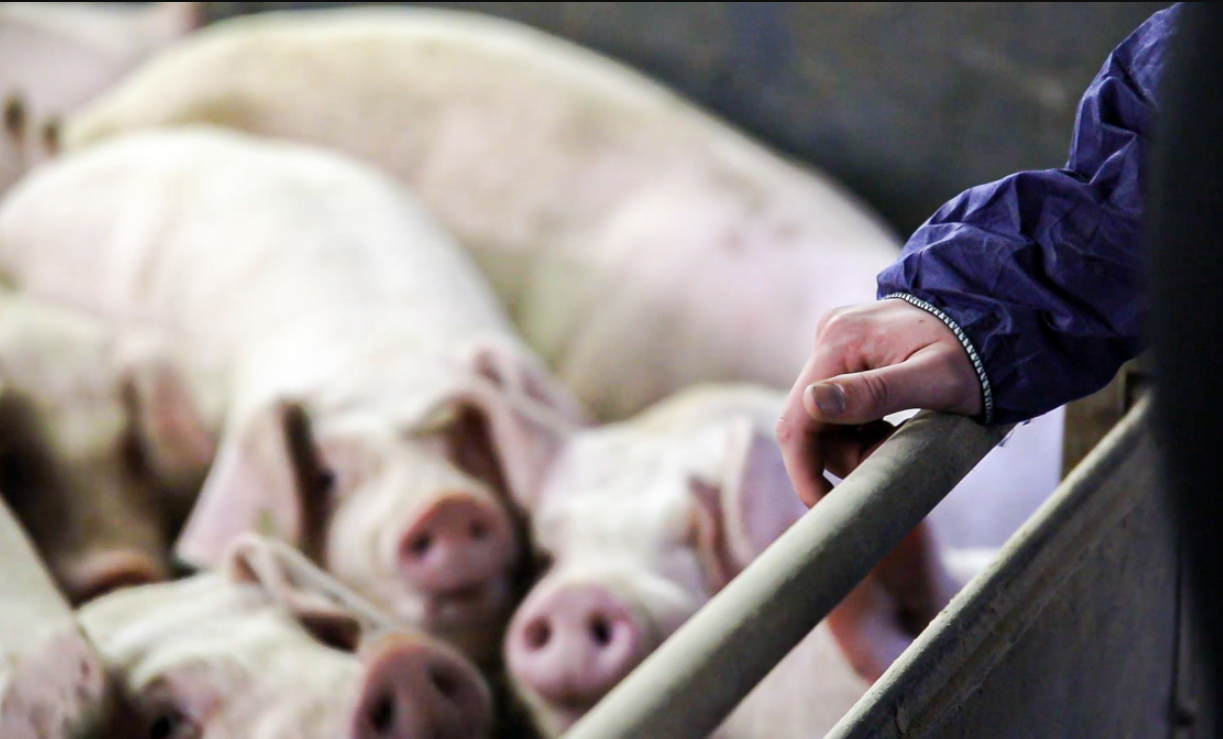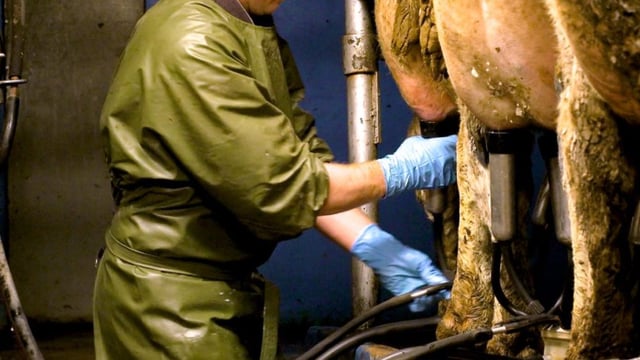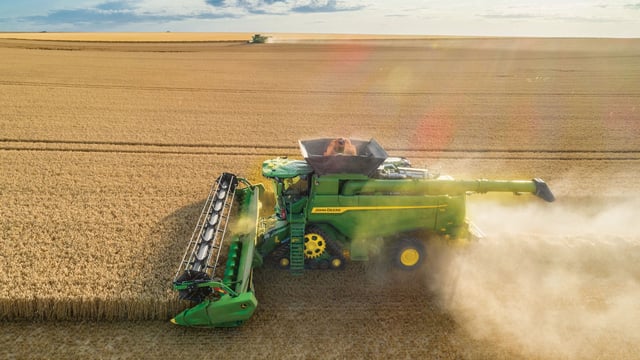Farm business income in NI to decrease by 46% - DAERA
Farm business income measured across all farm types in Northern Ireland is expected to decrease from an average £51,043 in 2022/2023 to £27,345 in 2023/2024.
This is a decrease of £23,699, or 46% per farm, the Department of Agriculture, Environment and Rural Affairs (DAERA) said.
Farm business income is expected to increase (by varying amounts) for Cattle & Sheep (LFA), Cattle & Sheep (lowland) and pig farm types between 2022/23 and 2023/24.
For these farms, the upturn in their incomes is attributable to higher beef and pig prices in the 2023/24 year.
However, farm business incomes for cereals, dairy and mixed farm types are expected to fall by 81%, 70% and 33% respectively due to lower grain and milk prices in the 2023/24 year.
Provisional figures indicate that the total income from farming (TIFF) in Northern Ireland decreased by 44% (47.8% in real terms) in 2023.
The TIFF, which represents the return on own labour, management input and own capital invested for all those with an entrepreneurial involvement in farming, was £609 million in 2022 and dropped to £341 million in 2023.
Total gross output for agriculture in Northern Ireland was 7% lower at £2.87 billion in 2023.
There was a 6% decrease in the value of output from the livestock sector, while field crops decreased by 21% and horticulture decreased by 27%.
These figures are for the calendar year and therefore they represent the outturn across two harvest years.
Dairying remains the largest contributor to the total value of gross output at £892million in 2023 - a decrease of 21% between 2022 and 2023.
The annual average farmgate milk price decreased by 21% to 35.1ppl while the volume of raw milk produced in Northern Ireland decreased by 0.2% to 2.5billion litres.
The output value of cattle was 6% lower at £568million in 2023.
The total number of animals slaughtered decreased by 5.8% in 2023, whereas the average carcase weights for clean and cull animals were 1.3% and 2.3% lower respectively.
These changes resulted in the volume of meat produced being 7.1% lower in 2023, DAERA said.
The average producer price for finished clean cattle was £4.60/kg in 2023 while the average producer price for cull animals was £3.24/kg.
These prices were 10% and 3% higher than their respective averages for 2022. In addition to these changes, there was also a stock change of minus £48 million due to a reduction in the number of cattle on ground between 2022 and 2023.
The value of output from sheep decreased by 0.5% to £109million in 2023.
The total number of sheep slaughtered increased by 4% in 2023 whereas the average carcass weight decreased by 2% to 22kg.
Volume of sheep meat produced increased 2% in 2023. The average producer price increased by 3% to £5.50/kg.
All intensive sectors recorded an increase in their output. The value of output in the poultry sector increased by 2% to £380 million in 2023 while the egg sector increased by 47% to £223 million.
The value of pig output also increased by 15% to £297million.
The poultry sector recorded a 8% increase in its production volume for 2023, whereas the pigs and eggs sectors recorded a 4% and 0.3% decrease in their respective production volumes when compared with their previous year levels.
Producer prices in the pigs and eggs sectors increased by 20% and 43% respectively, whereas, the producer price for poultry decreased by 3%.
The total output value for field crops decreased by 21% in 2023 to £86 million. This was due to decreases in both grain prices and yields in 2023, DAERA said.
The value of output for cereals decreased by 37% to £40 million whereas the value of output for potatoes increased by 15% to £31 million. Output values for field crops are across a calendar year and include production from two harvests.
The value of output recorded in the horticulture sector was lower year on year for 2023, at £70million.
Mushrooms and vegetables are the main contributors to this sector in value terms, with a combined estimated output value of £46million.
The total value of gross inputs decreased by 0.4% in 2023, to £2.17billion.
Feedstuffs costs, which accounted for 57% of the total gross input estimate, increased by 5% to £1.24 billion in 2023.
There was a 3.3% increase in the volume of feedstuffs purchased and a 1.6% increase in the average price paid per tonne.
The total cost of fertilisers in 2023 decreased by 43% with a 14% decrease in the volume purchased and a 33% decrease in the average price paid per tonne.
There was also a 36% fall in the value of total lime purchases, with the result that total expenditure on fertilisers and lime decreased by 42% to £112million.
Total machinery expenses decreased by 2% to £199million in 2023, mainly as a result of a 10% decrease in the cost of fuel and oils.






